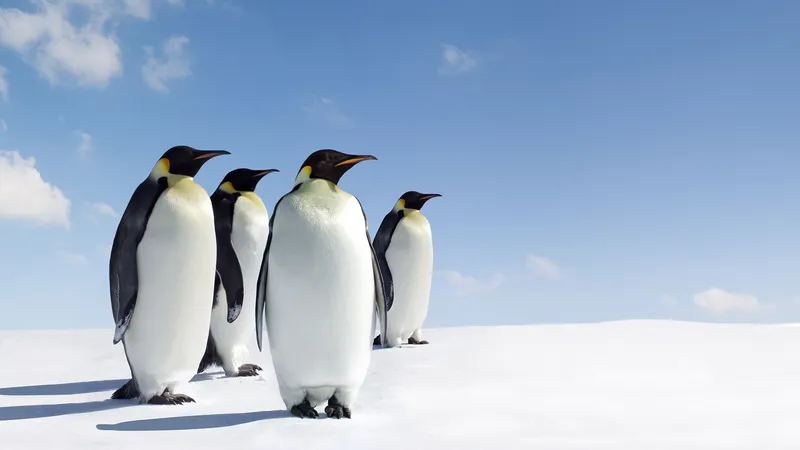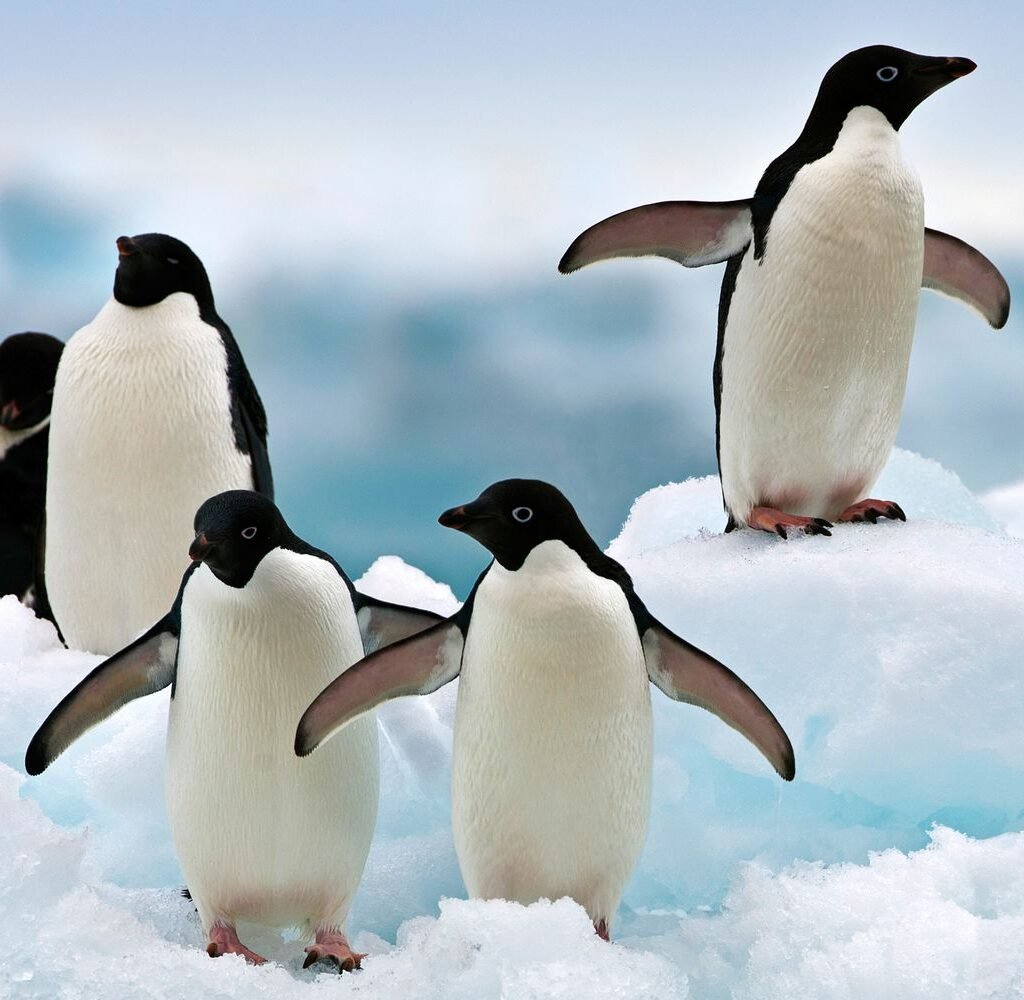“Penguins: The Charming Guardians of the Antarctic”

Introduction
Penguins are one of the most beloved and iconic symbols of the Antarctic. With their distinctive waddles, striking tuxedo-like appearance, and remarkable adaptations to one of the harshest environments on Earth, these fascinating birds capture the hearts of people worldwide. This exploration delves into their biology, behavior, habitat, and the pressing challenges they face in a changing world.
1. Overview of Penguins
- Species Diversity: There are 18 species of penguins, ranging from the large Emperor and King penguins to the smaller Little Blue penguins. Each species has unique characteristics adapted to their specific environments.
- Physical Adaptations: Penguins are flightless birds, having evolved to become excellent swimmers. Their streamlined bodies, strong flippers, and webbed feet make them agile in water, while their thick layer of blubber and dense feathers provide insulation against the cold.
2. Habitat and Distribution
- Antarctic Regions: Most penguin species inhabit the Southern Hemisphere, particularly in regions like Antarctica, the sub-Antarctic islands, and parts of South America, Africa, and New Zealand.
- Breeding Colonies: Penguins are social birds, often forming large colonies for breeding and raising their young. These colonies can number in the thousands, providing safety in numbers against predators.
3.Behavior and Social Structure
- Waddling and Swimming: Penguins are known for their distinctive waddling walk on land, but in water, they are agile and fast swimmers, capable of reaching speeds up to 15 miles per hour.
- Communication: Penguins use vocalizations and body language to communicate within their colonies. Each species has its unique calls, which help parents recognize their chicks and mates amidst the noisy crowds.
- Courtship and Parenting: Many penguin species engage in elaborate courtship displays, including synchronized swimming and vocal duets. Both parents share responsibilities in raising their chicks, with some species even taking turns incubating eggs.

4. Diet and Feeding Habits
- Diet: Penguins primarily feed on fish, squid, and krill. Their diet varies based on the species and availability of prey in their habitat.
- Foraging Techniques: Penguins are skilled hunters, using their excellent underwater vision to locate prey. They can dive to impressive depths—Emperor penguins, for example, can reach depths of over 500 meters.
5. Conservation Status
- Threats: Penguins face numerous challenges, including climate change, overfishing, and habitat destruction. Melting sea ice and changing ocean temperatures impact their food sources and breeding grounds.
- Conservation Efforts: Various organizations and governments are working to protect penguin habitats and promote sustainable fishing practices. Efforts include establishing marine protected areas and conducting research on penguin populations.
6. The Importance of Penguins
- Ecosystem Indicators: As top predators in their ecosystems, penguins play a crucial role in maintaining the balance of marine environments. Their health can indicate the overall health of the ocean ecosystem.
- Cultural Significance: Penguins hold a special place in human culture, symbolizing resilience and adaptation. They are popular in media, literature, and conservation campaigns, helping raise awareness about the importance of protecting their habitats.
Conclusion
“Penguins: The Charming Guardians of the Antarctic” encapsulates the unique qualities of these incredible birds and their vital role in the Antarctic ecosystem. Their adaptations, social structures, and the challenges they face remind us of the delicate balance of nature and the need for concerted efforts to protect these endearing guardians of the icy realm. As we strive to understand and preserve their habitats, we not only safeguard their future but also the health of our planet’s oceans.








